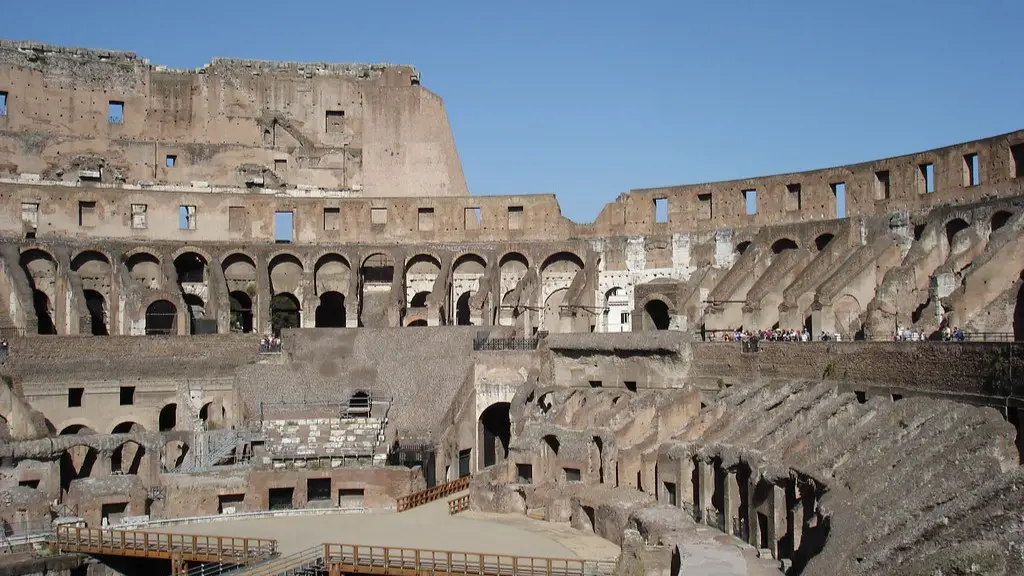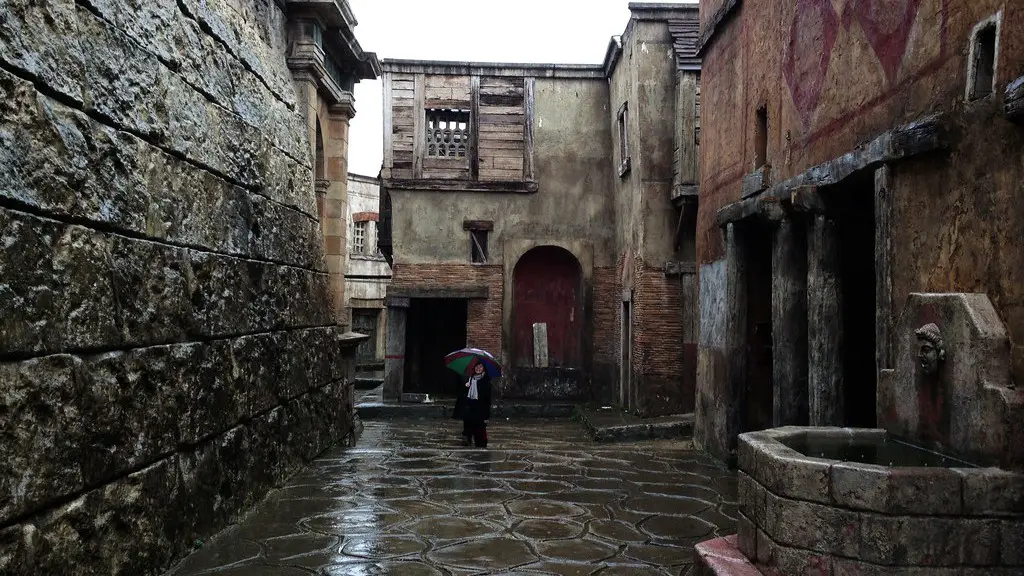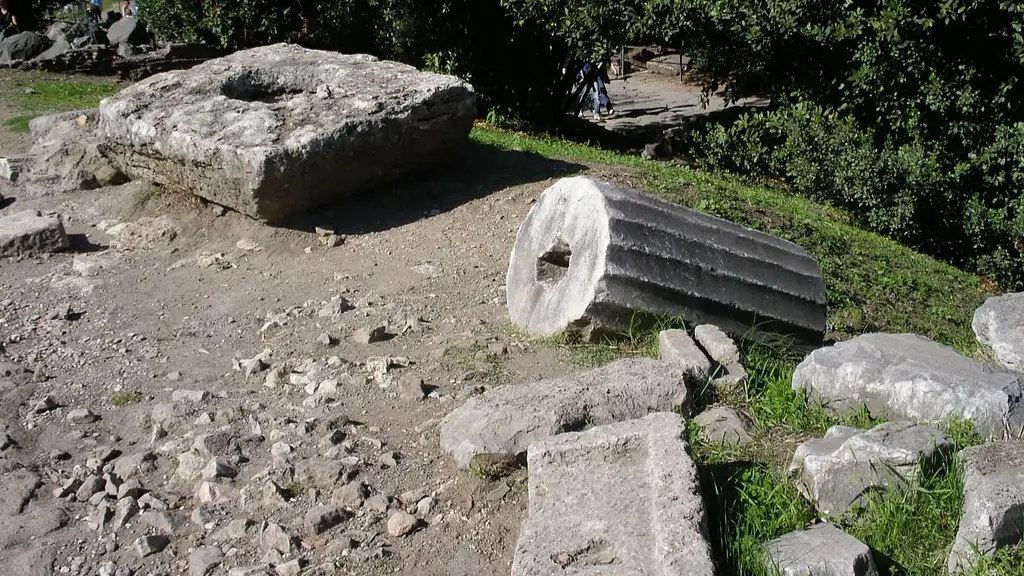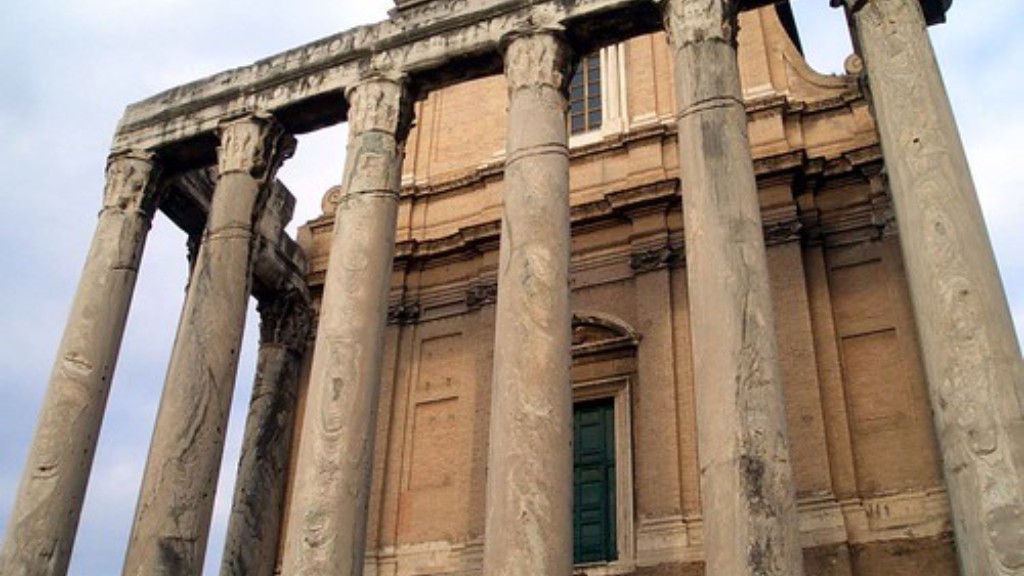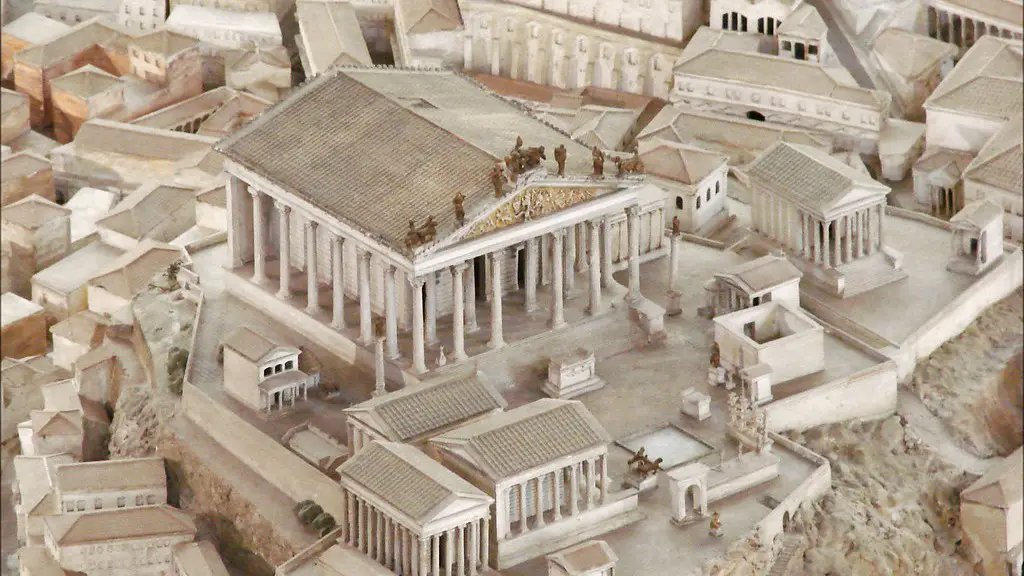Overview of Ancient Rome
Ancient Rome was the largest and most influential city of its time, dominating the Mediterranean world and serving as the hub of global trading, warfare and empire building. The city of Rome was founded by Romulus, the mythical son of Mars, in the 7th century BC, and by its peak in the 1st century AD, it was the home of a booming population of over one million people and boasted of being the largest city in the world. This highly prosperous city was occupied by several powerful and wealthy Roman leaders and citizens, whose influence and strength bewildered their contemporaries. From its height, Rome span the region from North Africa to Britain in the scope of its law and culture, in a reach unmatched by any other political phenomenon of the pre-modern world.
The Population of Ancient Rome at its Peak
The population of ancient Rome at its pinnacle was somewhat of a disputed matter, as ancient sources provide two different numbers given the timeframe they were written in. Ancient authors such as Pliny and Suetonius suggest that the population of Rome in the 1st century was around one million, while historical records written in the later 2nd and 3rd centuries give a count of 400,000 to 600,000.
These different figures can be further narrowed down by considering other factors such as sanitation, housing, geographic size and the extent of trade, all factors that influence the population of a city. To gain an accurate estimate of the population, these factors must be taken into account. Many experts believe that the population was most likely between 500,000 to 600,000 people at its peak.
The population of Rome also varied during the city’s reign depending on several internal socioeconomic factors and external wars and conflicts. Asides from increasing due to migration and immigration, the population of Rome during its time decreased drastically due to frequent battles, civil wars and war-related disasters. Additionally, economic depression, poverty and disease also reduced the population of Rome during certain periods of time.
The City’s Expansion
At its peak, Ancient Rome was one of the largest cities in the world and served as the centre of its vast empire. To accommodate its bustling inhabitants, the city was expanded multiple times. Romulus, the founder, established the first infrastructure around the Palatine Hill, where the government of Rome was originally located. This basis for the city was widened and coupled with the influence of Julius Caesar’s reforms, institutions of a servus publicus and other Roman economic systems, the city acquired an efficient urban infrastructure.
As its population grew, Rome extended its boundaries over the hills of Rome and surrounded its seven hills with a perimeter wall. This was later extended by Augustus, founder of the Roman Empire, who connected the area between Ostia, the port of the city, to Rome by building the Appian Way, one of the most important roads that connected the inner part of the empire to its other regions.
These linguistic, social and economic gains were used as a paradigm in large cities of other European territories. During the medieval times, cities of Britain, Gaul and Germany began to copy Rome’s urban planning success and designed their streets, districts and markets according to its frameworks. This was an example of knowledge transfer between ancient civilizations that had been established during Rome’s peak period.
Socioeconomic Structure
Rome’s tremendous success and growth was supported by its sturdy and well-functioning socioeconomic structure. This structure helped drive economic and financial accomplishments, which also in turn contributed much to the expansion of the city. Ancient Rome was divided into two sections – the lower parts of the city and the upper parts. In the upper regions of the city resided the rich and powerful citizens and in the lower parts the lower class citizens and slaves. This type of stratified system was reflected on the local currency and tax requirements, based on what class an individual was in, and their military obligations and rights.
The structure of Ancient Rome also had clear evidence of societal divisions in legal, financial and political matters. The wealthy and influential citizens were granted more legal rights than slaves and the lower social classes, who were most likely to face harsh punishment for civil offences. Furthermore, wealth was reflective of an individual’s access to education and resources, including medical attention. Generally, the rich had better access to the court systems and provincial services than the lower classes. This can be seen through cases of various established wealthy Romans purchasing exclusive rights to luxuries, such as the construction rights of certain public projects.
Contribution to Western Civilization
Throughout its reign, Ancient Rome had a major influence on every aspect of its society, from law to culture. Politically, Rome pioneered the notion of written laws, where laws that applied to a person’s rights and responsibilities, irrespective of their rank, had to be presented in public. This system infected many modern political systems and is used today in much of the Western World and the United States. Rome’s famous tripartite Constitution essentially created the legal framework of modern and inclusive governments.
Regarding culture, Ancient Rome had a lasting impact on literature, art, cuisine, science, engineering and language. Latin, the language used by Roman officials, served as the foundation of many Romance languages throughout Europe and other areas of the world. Roman sculptures, such as the Venus de Milo, are still renowned to this day and served as imageries of power and perfection. Roman amphitheaters and sports stadiums have been adopted by modern-day architects and their culinary methods are still used today.
Agriculture and Trade
Agriculture and trade were the economic backbone of Ancient Rome and together, they helped expand and fund the city. At its peak, Ancient Rome was entirely capable of sustaining its own food needs and it is largely argued that had the city not been sacked multiple times by foreign invaders then it would have been able to produce more food and feed even more people. In its day, Rome had accumulated vast tracts of land from the provinces it had conquered and these became the main sources of its main activities, such as wine trading, wool production and animal husbandry.
Rome’s success was largely credited to its extensive trade network. Rome’s excellent port city provided an ideal trading hub for long distance merchants and traders, with routes that connected Southern Europe, Africa and the Mid East. This eastern trade enabled the city to gain access to rare regional commodities, such as silk, spices and tropical wood and became an invaluable asset in Rome’s capacity to thrive in its 300 year reign.
Urban Disadvantages
Although Ancient Rome managed to survive and thrive for centuries, it had its fair share of urban problems. The crowded city was in extreme poverty and had a major sanitation problem, as waste was thrown everywhere and blocked the streams that had been built by the government. As a result, the city was constantly suffering from unsanitary diseases such as malaria, which was an incredibly fatal illness during those times.
To further complicate the issue, Rome had little to no access to clean water and the aqueducts that were present were barely maintained, especially when it came to the poorer outskirts of the city. Additionally, the authority had little control over criminal activities in certain districts of the city, creating massive security problems as a result.
Growth After Its Peak
Ancient Rome still holds its ground as one of the most successful cities of its time and its prominence is still remembered in many aspects of modern day cultures and societies. Even after its decline and fall, the city continued to mesmerize individuals from all across the world. After the decline of the Western Roman Empire in the 5th century, Rome still stood as the capital of the Italian kingdom and was still occupied by a population of over 700,000 people.
After being sacked by Allied forces in the 2nd World War, the city has since seen a surge in its population and it currently stands as a dominant global city with a population of around 3 million people and has since become a leader in sports, fashion, culture and art. Rome today is a fantastic snapshot of the city’s multicultural past and continues to remain as a symbol of human progress and ambition.
